ALMA and the VLA observed more than 300 protostars and their young protoplanetary disks in Orion. This image shows a subset of stars, including a few binaries. The ALMA and VLA data complement each other: ALMA sees the outer disk structure (visualized in blue), and the VLA observes the inner disks and star cores (orange).

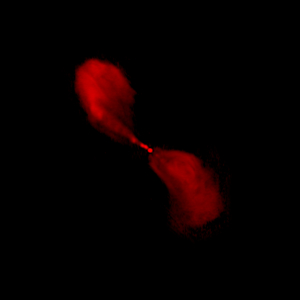
Centaurus A in Radio
An active galaxy at a distance of 10 million light years from Earth.
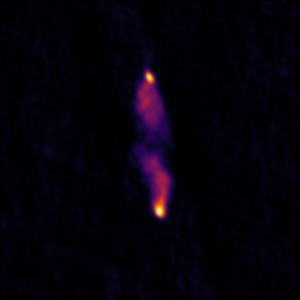
A Universe Full of Radio Galaxies
Radio galaxies are a subclass of active galactic nuclei (AGN) and, in most cases, display what is known as a “core-jet-lobe” morphology. A supermassive black hole, accreting matter at the galaxy’s core, launches material out at the poles, forming two jets of highly energetic particles. These jets can travel immense distances before spreading out into massive, radio-emitting lobes. The structure of these galaxies and their environments will give astronomers clues into how they form stars throughout the history of the universe.
Millions of radio sources will be imaged with the Very Large Array Sky Survey (VLASS). By taking this extragalactic census, a statistically significant population will begin to form. An ambitious radio survey like VLASS provides the astronomical community with a crucial piece of the puzzle in the electromagnetic spectrum, comparing data to the ultraviolet, optical, infrared, and sub-millimeter. Coordinates for this celestial object are: 09h 36m 01.7s -32d 37m 22.6s.
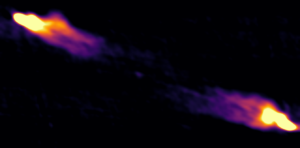
Extragalactic Jets
This image of a distant radio galaxy is part of the Very Large Array Sky Survey – a seven-year campaign using the VLA to map eighty percent of the sky from New Mexico and generate a database of approximately 10 million radio sources. The image depicts massive radio jets blasting away from a supermassive black hole at the center of the galaxy, which is seen as a faint dot between the two jets. The VLA Sky Survey continues to generate thousands of images at unprecedented resolution, revealing the details and stunning structure of extragalactic jets. If you want to look up where on the sky this image resides, the galaxy’s coordinates are: 14h 54m 27.8s, -36deg 39m 58.0s (J2000).
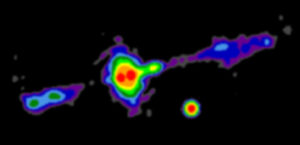
VLA Image of Torus in Cygnus A
VLA image of the central region of the powerful radio galaxy Cygnus A, showing the doughnut-shaped torus surrounding the black hole and accretion disk.
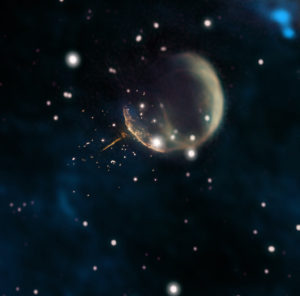
Cannonball Pulsar
Observations using the Very Large Array (orange) reveal the needle-like trail of pulsar J0002+6216 outside the shell of its supernova remnant, shown in image from the Canadian Galactic Plane Survey. The pulsar escaped the remnant some 5,000 years after the supernova explosion.





